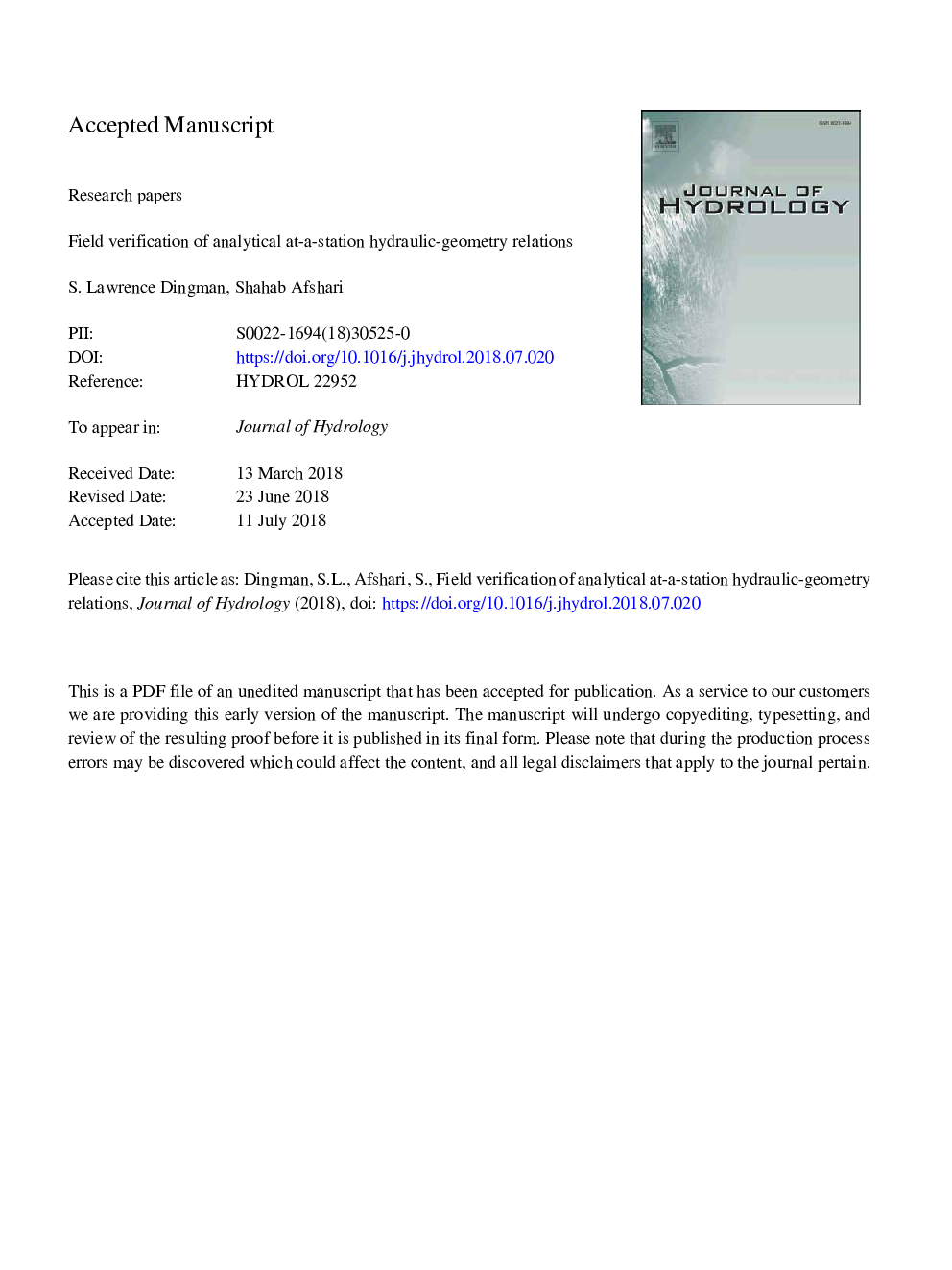| Article ID | Journal | Published Year | Pages | File Type |
|---|---|---|---|---|
| 8894516 | Journal of Hydrology | 2018 | 56 Pages |
Abstract
We used data from 109 surveyed cross sections at 34 reaches of New Zealand rivers ranging in bankfull width from 8 to 234â¯m, each with 4-13 measured flows, to compare regression-derived at-a-station hydraulic geometry (AHG) coefficients and exponents to the coefficients and exponents predicted by Dingman's (2007) analytical AHG relations. The analytical geometrical relations depend on measured values of 1) bankfull width, 2) bankfull maximum depth, and 3) a geometric exponent fit to the measured cross section. Because of data limitations and the lack of a generally applicable analytical hydraulic relation, the hydraulic relation is here represented by an empirical power-law relation between depth and velocity developed at each section. The fits between the quasi-analytical and empirical values of the AHG coefficients and exponents are highly statistically significant, with intercepts near 0 and slopes near 1, validating Dingman's original analytical relations. This confirmation of the physical basis underlying empirically-observed AHG relations, along with some statistically-significant relations among the quantities that determine AHG coefficients and exponents that are not predicted by theory, may be useful for estimating AHG relations from remotely-sensed or partial information.
Keywords
Related Topics
Physical Sciences and Engineering
Earth and Planetary Sciences
Earth-Surface Processes
Authors
S. Lawrence Dingman, Shahab Afshari,
